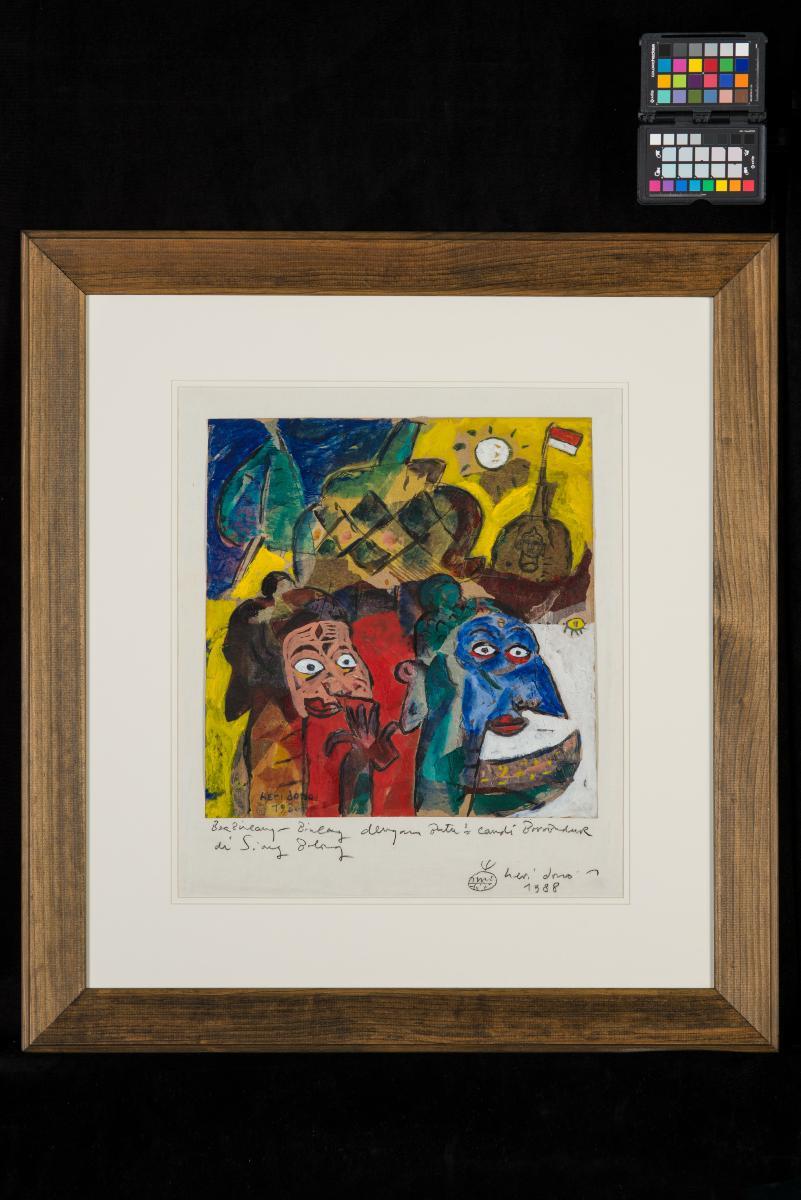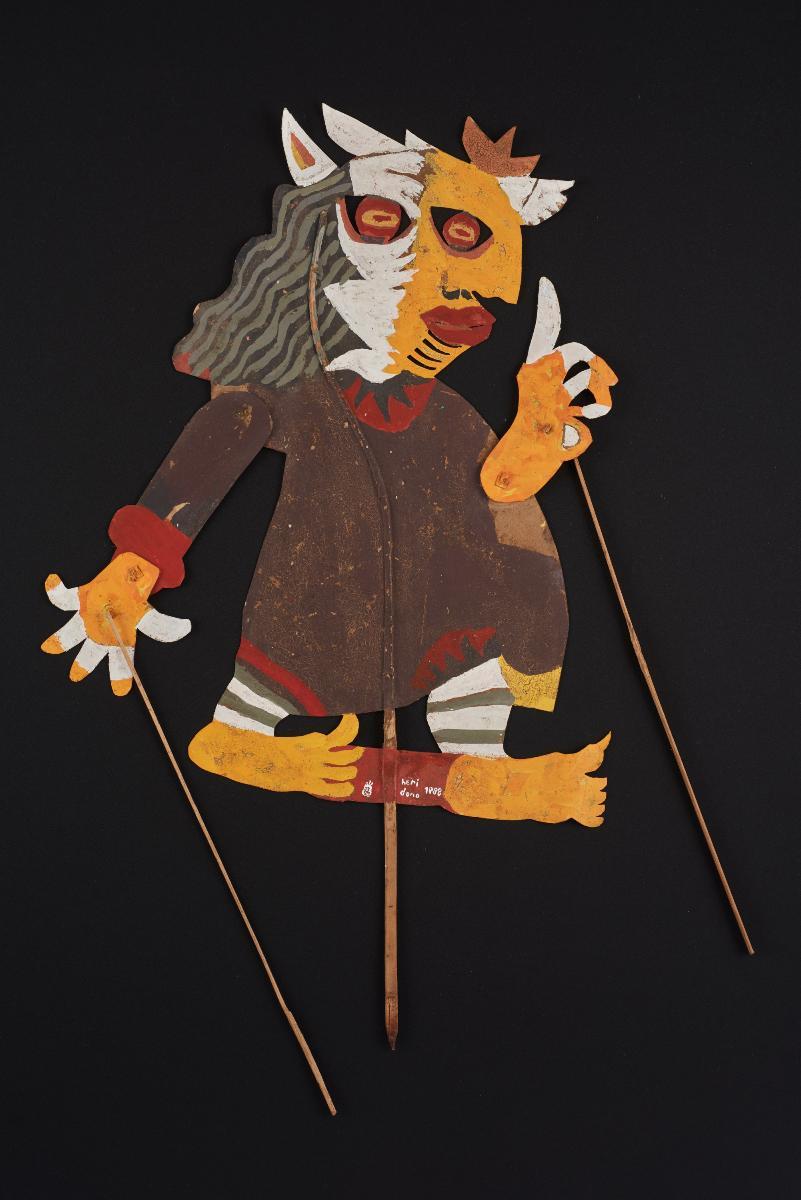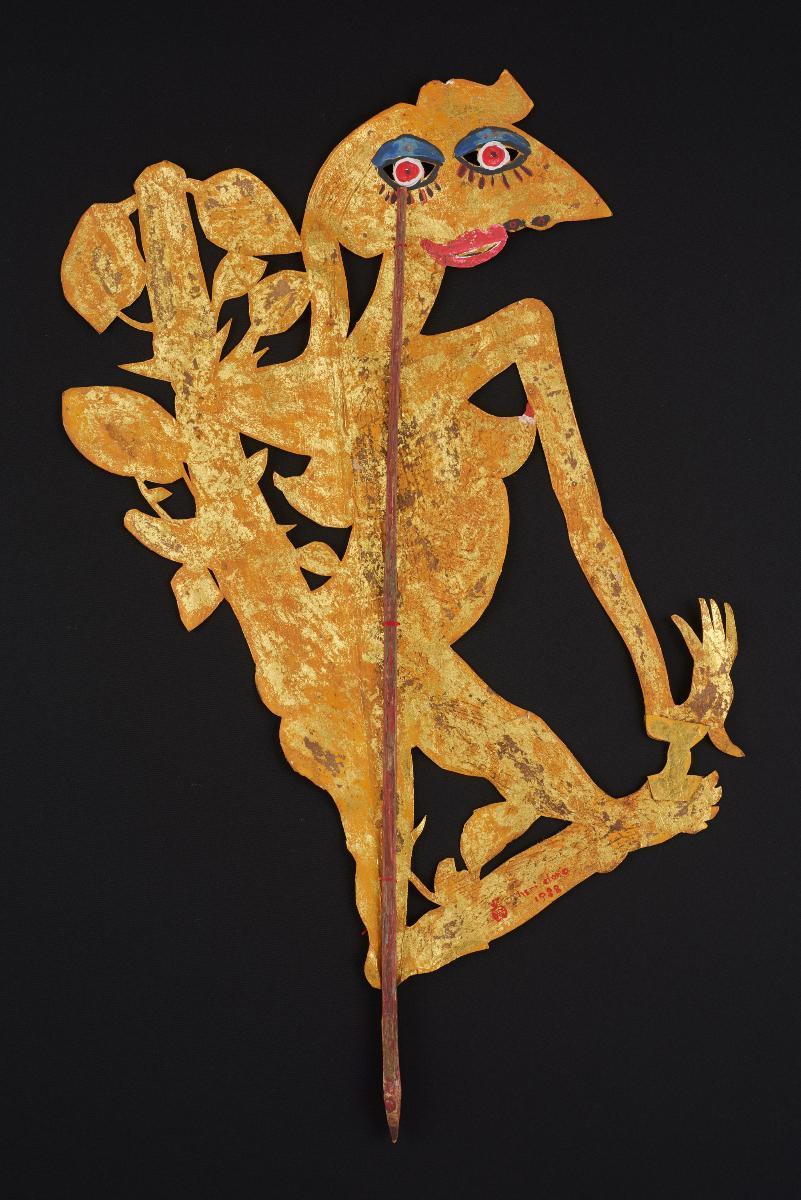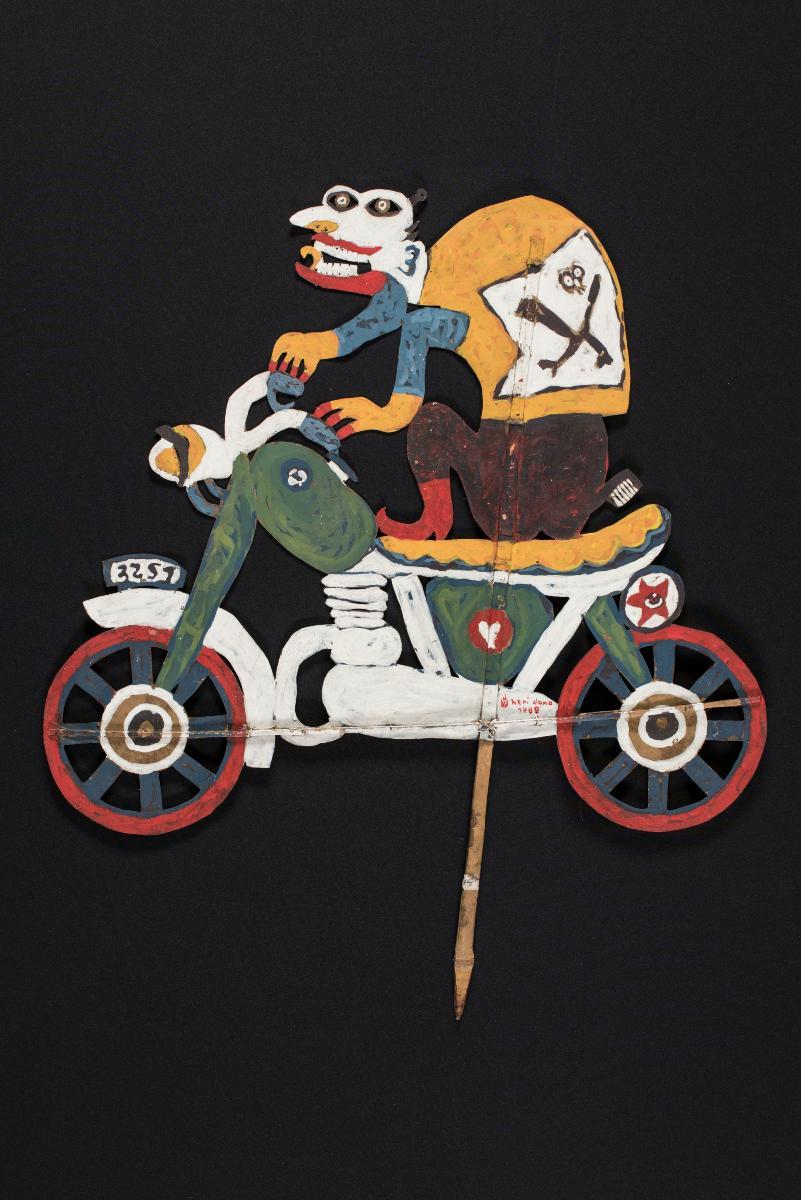Born in 1960 in Jakarta, Heri Dono is a very distinguished painter and installation artist in Indonesia. His works have been presented internationally and have been widely collected by both Asian and Western institutions (eg. Tropenmuseum in Amsterdam and the Fukuoka Asian Art Museum). He was presented with the Prince Claus Award in 1998. Heri studied at the Institut Seni Indonesia, where he was already a prize-winning student. He famously dropped out of school to study wayang kulit (shadow puppet) with a well-known puppet master. He uses traditional art forms such as wayang kulit or tribal sculpture, and adapts it to his own contemporary idiom in his art (eg. mixing it with representations of the becak or Superman), from paintings to installations to performance art, so as to satirically comment on social and historical problems.His style has been spoken of as a form of new internationalism, which presents a different mode of challenge to the Western art hegemony by returning to specific cultural heritage, in contrast with the New Art Movement (GSRB) in the seventies and eighties that deployed Western artistic expressions but had little discernible relations with local craft traditions.The painting is a fine early example of Heri Dono’s movement between art and anthropology, his syncretic experiments with hybridity, taking stylistic influences from Western art history (such as Picasso and Miro), pop culture and traditional arts in Indonesia. The title of the work indicates literally his own artistic encounter with the cultural legacy of Borobudur stone temples but marrying it with figures of cubistic distortions.The title “Dialogue with a Stone” also alludes to the tense or stone-walled relationships with authorities during the height of Suharto’s New Order regime, as Dono says “there is difficulty communicating with those in power because they do not listen”.















